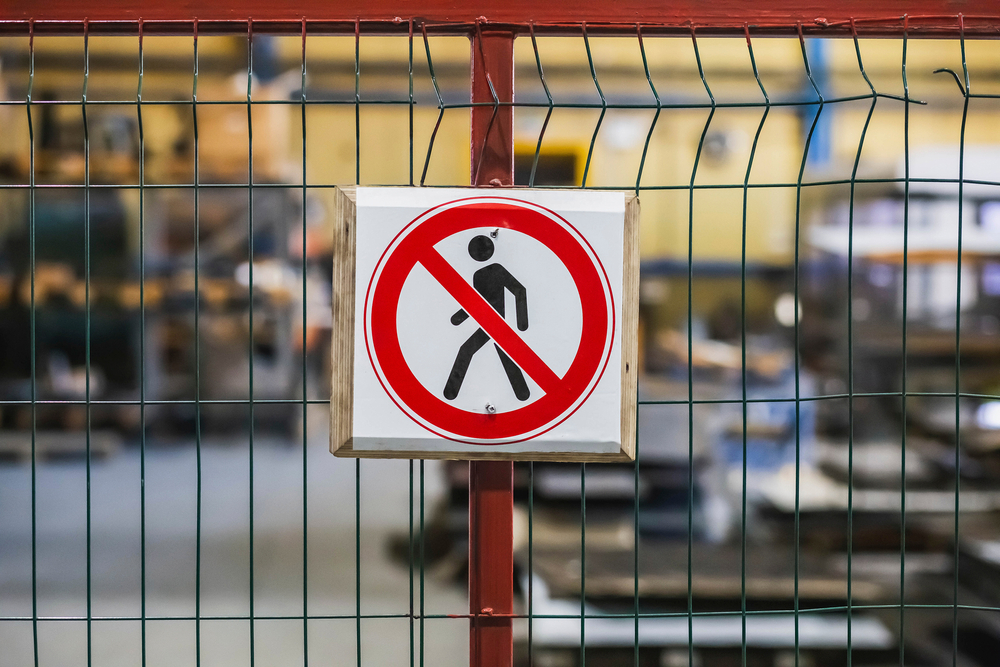
Road signs are a natural part of driving, but it’s easy to overlook how essential they are for everyone’s safety. Without regulatory prohibition signs, drivers could make decisions that could lead to more collisions and injuries on the road.
Fortunately, these signs can go a long way toward creating a safe and stress-free environment for both drivers and pedestrians. But what are regulatory prohibition signs, and how do they work? Let’s dive in.
What are Regulatory Prohibition Signs?
A regulatory prohibition sign is a road sign designed to prohibit a driver from doing something. Typically, these signs are posted in areas where drivers either cannot go or must pay attention to other cars on the road to move forward safely.
The most common type of regulatory prohibition sign is the stop sign, but many others are used in cities and counties nationwide. Also, since these are regulatory signs, they’re enforceable by law. In some cases, these signs can lead to increased citations, which not only help prevent incidents but raise money for the city.
Examples of Regulatory Prohibition Signs
These signs are everywhere, both in residential and commercial areas. You can find regulatory prohibition signs on intersections, on and off-ramps, and other areas where cars are not allowed to go. Here’s a rundown of all the most common prohibition signs and their meaning.
No Right or Left Turn
Typically, drivers are not allowed to turn right or left onto an adjacent street because that street flows one way only. So, in this case, if the driver turns against traffic, there’s a much higher chance of a collision.
These signs may also be used when the adjacent street is reserved for specific vehicles or if the road is on private property. No-turn signs have a white background and a black arrow covered by a circular prohibition icon. Usually, these signs have the words “no [direction] turn” written in black lettering, but not always.
No U-Turn
Generally, U-turns are allowed on streets and highways with traffic moving in opposite directions. However, there may be instances where a U-turn could be unsafe or lead to increased traffic congestion. For example, some intersections may prohibit U-turns to ensure no one blocks the road for an extended period. In other instances, there may be dedicated right or left-turn lanes, so someone performing a U-turn could cause a collision.
Most no U-turn signs have a curved black arrow on a white background with a red prohibition icon over it. Sometimes, the sign may simply say “No U-Turn” or have a combination of icons and text.
Do Not Enter
A Do Not Enter sign is helpful to prevent drivers from going the wrong way on a one-way street or to prevent them from going onto a private road. These signs are also common on freeway ramps to illustrate whether the driver is going the correct way to get onto the interstate.
This sign uses a red circle with white lettering and a white rectangular shape in the center.
Stop
Stop signs are one of the most common options used, as they’re placed at most intersections in the United States. While the sign tells a driver to stop their car, the primary purpose is to get the driver to pay attention to other vehicles on the road. A four-way stop is when all sides of an intersection require drivers to stop and yield. A two-way stop is when one road has the right of way and cross streets do not.
Stop signs are octagonal with a red background and white lettering.
Yield
While a stop sign technically indicates whether a driver must yield to oncoming traffic, a yield sign works a little differently. In this case, the driver is not required to stop; in some instances, stopping would be more dangerous. For example, yield signs are common on freeway on-ramps where cars have to merge with traffic. Coming to a full stop would make reaching the minimum freeway speed harder, so cities use a yield sign instead.
These signs are shaped as a downward equilateral triangle. They use a thick red border with a white triangle in the middle. The word “yield” is written in the white section with red lettering.
No Parking
Parking can be a hassle for drivers in big cities, but these signs are vital for several reasons. First, it prevents drivers from blocking entrances and exits to buildings and lots. Second, it can make it easier for emergency services or delivery trucks to conduct their business by sectioning off loading and emergency zones.
No parking signs are also necessary to prevent cars from making the road unsafe. For example, if a street is too narrow to have cars parked on either side, these signs can ensure the flow of traffic.
These signs are typically rectangular with a white background and black lettering. They also have a capital P with a red prohibition icon over it.
Why are Regulatory Prohibitive Signs Important?
Regulatory prohibitive signs are important for cities and municipalities to ensure a safer driving environment for everyone. By prohibiting certain activities or driving habits, cities can reduce the number of collisions and injuries on the road. Also, in many cases, prohibitive signs help direct the flow of traffic to avoid substantial congestion.
Get Your Regulatory Prohibitive Signs from Worksafe Traffic Control Industries
At Worksafe Traffic Control Industries, we take road signs seriously. We have years of experience in the field and deliver superior results for cities and counties in the Northeast. Whether you need new signage for a particular area or have to replace old and worn materials, we offer fast and reliable service. Our signs are MUTCD-compliant, and we provide quick seven-day turnarounds for most orders. Call us today to see what we can do for you!

